On the Trail with Sheepherders, Groundskeepers of the Land
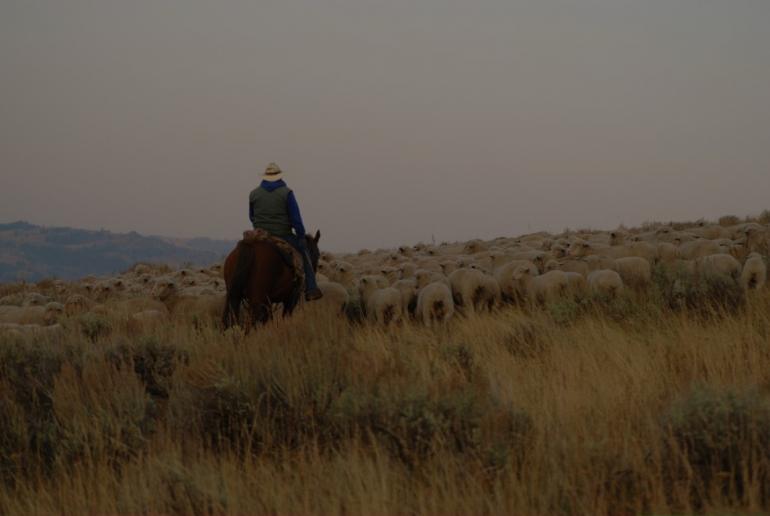
The name Montana conjures up cowboys herding cattle on the open prairie, and gunfighters hiding out in canyons to hide from rope-swinging vigilantes. But does Montana summon images of the lone sheepherder tending his flock and enduring days of solitude, bitter cold and the intense summer heat?
The Helle family has been keeping this tradition alive in a small corner of Montana, herding sheep in the Gravelly range outside Dillon for the last ninety years. I contacted Mike, who works in their marketing department, and somehow talked my way into joining their annual fall sheep trail, covering fifty miles in six days with an average of fifteen miles per day in order to get the livestock to the Helle ranch for winter.
The Gravelly range is vast with most of it sitting well above 9,000 feet. The landscape is varied with long plateaus where the wind howls, sub-alpine forests, meandering streambeds and thick stands of sagebrush that roll over the jagged hillsides. This is where the herders call home, living in their sheepherder wagons from July until October, herding up to 2,000 in one flock. While I am on this sheep trail, I will get a brief glimpse into a life virtually unchanged for a century or more.
On my first day we set out to find Taza, who has been herding for the Helle family for over twenty years. Mike, Evan Helle and I find him on a hillside resting the sheep. As I try to see out the truck’s hazy side window, an image emerges over by the fence line and I feel as if I have stepped back in time. There Taza stands silhouetted by the distant cliffs of Black Butte, where his trip started days earlier. His cowboy hat is stained dark and curled, bandana worn and frayed, coat ten different shades of brown from years of hard work on this landscape. What captures me instantly is his kind eyes and his genuine smile. He asks Evan in broken English why I am here. When Evan tells him I am writing an article, he looks over at me and smiles. I smile back and give an awkward wave. I try to make friends with his dogs, but they look at me with suspicion in their eyes and stay at a distance.

As I am taking photographs the wind snaps at me. I shrug deeper into my coat knowing that the forecast is calling for snow later in the week. I take a couple photos of the flock, and as I look up from my camera I discover how well they blend into the environment. I question what it will be like helping herd 1,300 sheep the next day with one of Helle’s other herders, Armando. We say our goodbyes to Taza and on the way to our camp Evan talks about the logistics of moving the sheep, how it can take hours, depending on where the herders are, to position their wagons for them. Each herder will go off years of instinct, watching the weather to determine what path to take, so finding them can often be quite hard. They rely on radios and scanning the hillsides with binoculars in order to try and keep track, one of the only concessions to modern technology that they employ.
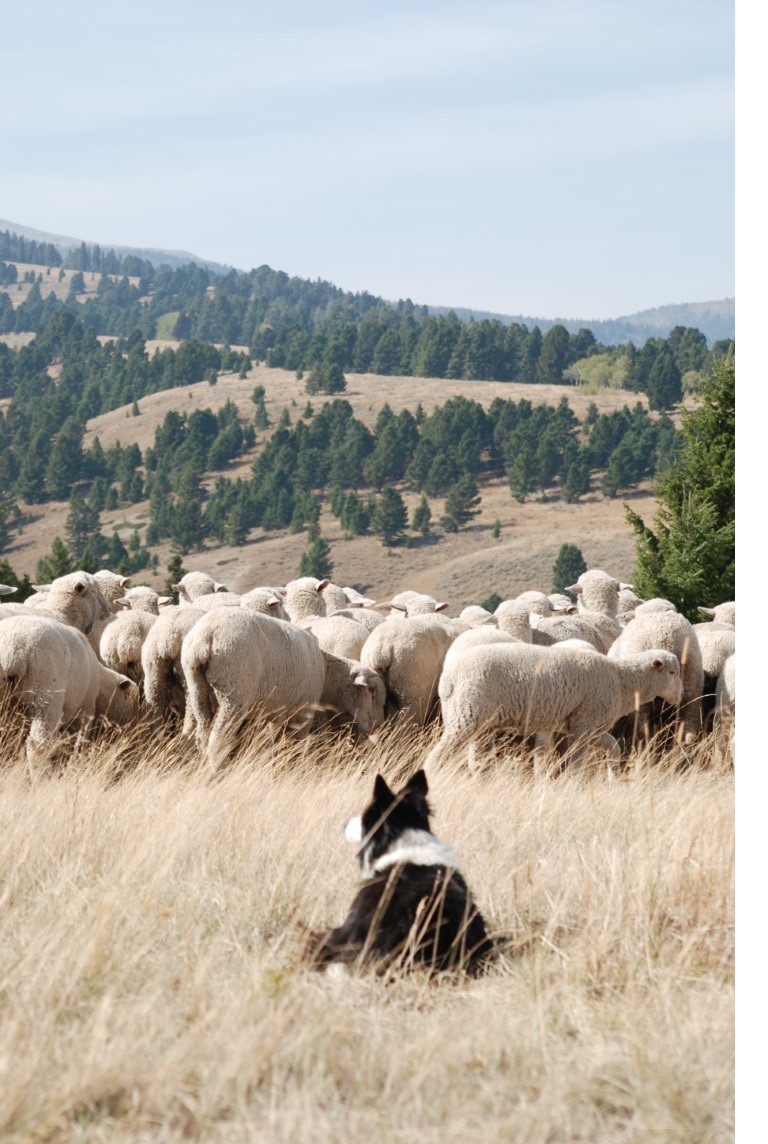
It is dark when we finally arrive at camp and I go to bed tired. I wake at 2:30 in the morning hearing the dogs run off into the dark, barking furiously at something. I am instantly grateful for them and wonder how the herders must feel when this happens and they must get up and walk out into the night to see what is out there. I stare up at the top of my tent listening to far-off coyotes and waiting for dawn to break.
The next morning greets us with blue skies and a brisk wind. We discuss the day’s plan over coffee. Typically, the herders like to start at dawn, so we are already behind schedule in finding Armando. Evan points to a ridge between a stand of tall aspen trees and says that is where we should find him. Mike and I grab our backpacks and take off through the thick sagebrush, down a ravine and up over onto the ridge. Knowing that herders will take their own route and it is a guess as to the actual whereabouts, we scan the ridge and only see mirages of what may be sheep or Armando, but which turn out to be a tree or a group of sagebrush. The wind has picked up, howling so loud that it is impossible to hear the sheep bleating to one . Armando, we soon learn, has taken his own route; he has gone up another ridge to the north of us, so we run to catch up to him. He sees us and gives us a wave while his guard dogs bark a warning all while wagging their tails at us.
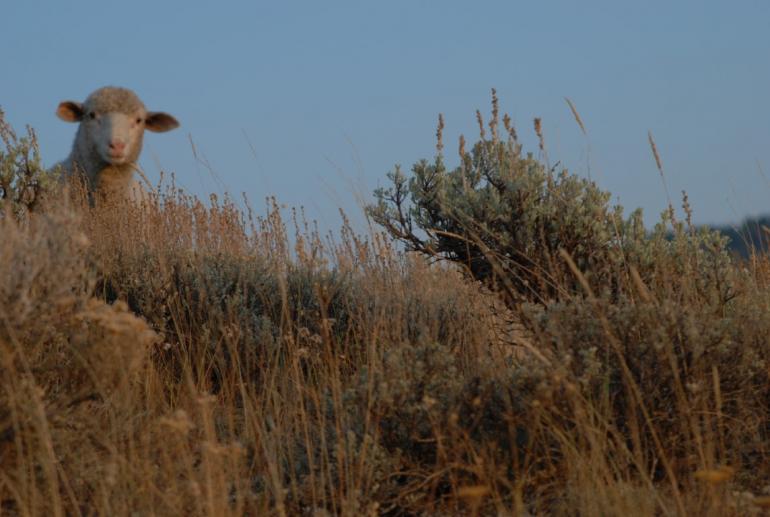
Armando’s style and attitude are a mix of modern with an older traditional flair. His hat is black around the edges, curled up and frayed; his vest and blue jeans are stylish;. He is quick to laugh but has a soft-spoken calmness to himself I can only attribute to years of solitude and living among his coworkers and partners: three herding dogs, two guard dogs and two horses that are friendly and always looking for treats from us. As we step in behind the sheep we hear Armando’s high-pitched whistles and watch one of the dogs run towards a stray sheep and nip at its back heel. The sheep is quick to turn and get back in line, and the dog happily darts off to do another task. The guard dogs saunter along in the back or to the sides watching for any threat. As we are following Armando, I catch him speaking softly to his horses, Jake and Cricket, in Spanish. Every so often he will walk alongside his horse and stop to make sure the dogs are doing well and give them some attention. They need each other out here.
As we are making our way back to camp, Mike and I talk about the impact that herding sheep has had on the land. Mike tells me that the sheep help to maintain healthy growth and mitigate the proliferation of noxious weeds such as larkspur. Evan later adds that they provide healthy habitat for all the wild game that take the same “annual trail” or migration that their sheep take from valley floor to mountain plateau. It all has a function and is all linked together for each to thrive.
It is my last day. Mike and Evan have already left camp and I am alone to pack up my belongings slowly and reflect. This landscape, this simple way of life, with no outside distractions, grows on you quickly. There may be a few modern touches to make their job marginally easier, but generally speaking these shepherds live very much as shepherds in Montana always have.
Herding is not just a way of life for them. They are also keeping this icon of Montana, vital and yet too often ignored, alive and well for generations to come.
On a personal note, I would like to thank the Helle family for giving me access into their lives and for their hospitality out on the range; Mike for the company and conversations; and to Armando for putting up with my terrible Spanish.
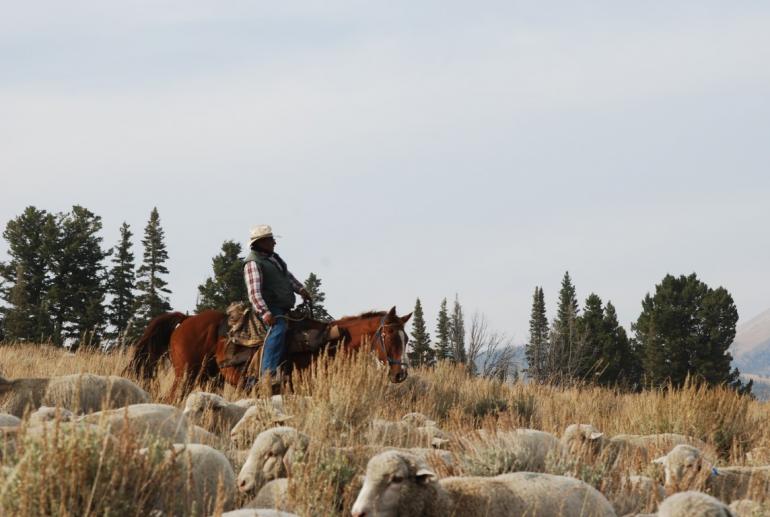





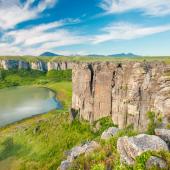

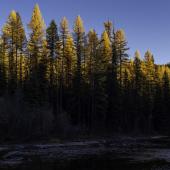

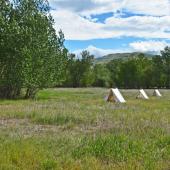
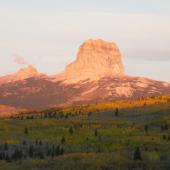
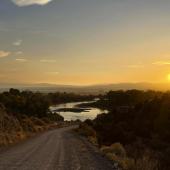
- Reply
Permalink